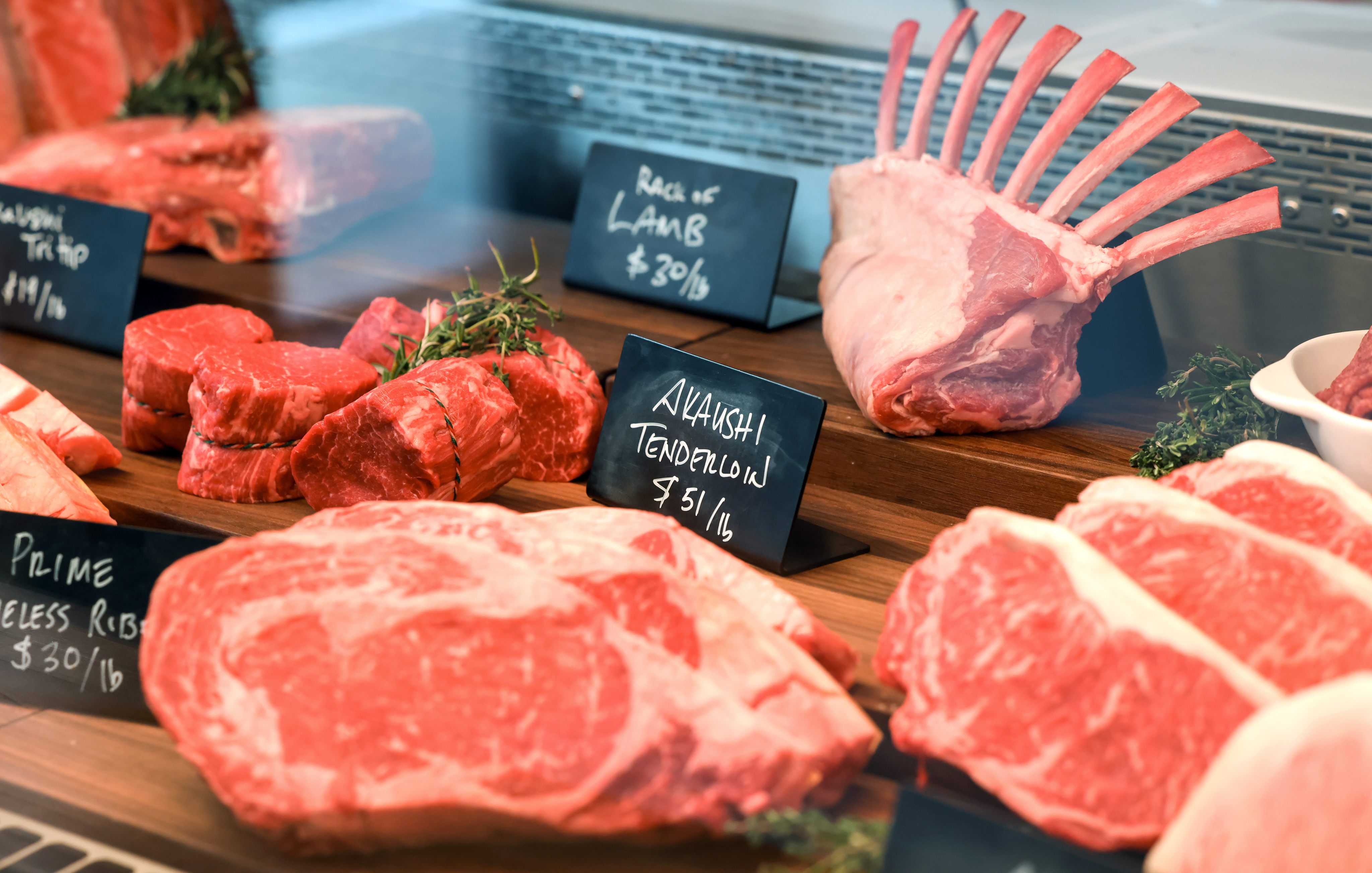How to Pick the Perfect Cut of Meat From a Trusted Meat Market
Choosing the ideal cut of meat from a relied on meat market requires a thoughtful method that stabilizes top quality, cooking function, and spending plan. Understanding the different types of meat and their corresponding cuts is essential, as is involving with your butcher to gain insights into sourcing and preparation.
Comprehending Meat Cuts


For circumstances, the tenderloin is prized for its buttery appearance and very little connective tissue, making it suitable for fast cooking approaches such as grilling or pan-searing. In comparison, tougher cuts like the brisket or shank advantage from slow cooking methods to damage down collagen, producing abundant and tasty outcomes.
In addition, the fat web content of a cut plays an essential role in taste profile and wetness retention throughout cooking. Cuts with greater fat content, such as ribeye, use a more robust taste, while leaner options, like sirloin, may need careful prep work to stay clear of dryness (bagley meat market edwardsville il). Comprehending these subtleties allows for educated choices that raise cooking creations, making certain that each dish showcases the finest qualities of the picked meat
Elements to Take Into Consideration
When picking the perfect cut of meat, a number of vital factors enter into play that can dramatically impact the final dish. Primarily, take into consideration the kind of meat you desire-- beef, pork, lamb, or poultry-- as each offers unique flavors and appearances. The specific cut within that category is equally important; for instance, ribeye delivers rich marbling, while tenderloin offers a lean, buttery structure.
One more element is the cooking method you plan to make use of. Cuts suitable for barbecuing, such as T-bones or sirloins, vary from those far better matched for slow-moving food preparation, like chuck roasts or shanks. Furthermore, freshness is vital; always choose meat with a dynamic color and company appearance, signifying high quality and appropriate handling.
Additionally, think about the source of the meat. A trusted meat market frequently gives in your area sourced, hormone-free, and grass-fed choices, which can enhance flavor and dietary worth. Finally, your budget will certainly lead your choice. Premium cuts may supply phenomenal preference, however there are also cost-efficient alternatives that, when prepared properly, can yield scrumptious results. Stabilizing these aspects will aid you select the perfect cut for your cooking requirements.
Inquiries to Ask Your Butcher
A butcher's competence can be vital when selecting the suitable cut of meat for your cooking undertakings. Start by asking concerning the resource of the meat.
Next, ask regarding the various cuts readily available for the sort of meat you choose. An educated butcher will discuss the nuances of each cut, assisting you pick one that matches your food preparation approach and desired outcome. Don't be reluctant to ask concerning the ideal cooking techniques for a particular cut; butchers commonly have pointers that can boost your recipe.
It's also prudent to inquire about the meat's freshness. Inquire see this page regarding the distribution timetable and just how usually the meat is replenished. This will certainly offer you self-confidence in the top quality of what you are acquiring. Last but not least, request for referrals based upon your individual preference preferences. An excellent butcher will certainly aspire to share their expertise and recommend cuts that will certainly thrill your taste buds. Engaging your butcher with these questions can significantly boost your meat option experience.
Acknowledging High Quality Meat

Structure is another important aspect; top quality meat must feel firm and a little resilient to the touch. Prevent any cuts that feel slimed or excessively completely dry, as these can indicate perishing or inappropriate storage. In addition, odor plays an essential role; fresh meat should have a clean, neutral scent, while any kind of off-putting or sour smells are red flags.
Lastly, take into consideration the source. Buying from a trustworthy meat market, where the meat's origin is understood, can make sure higher high quality requirements. By focusing on these signs-- color, marbling, structure, smell, and resource-- you can with confidence choose cuts that will boost your cooking and eating experience.
Cooking Techniques for Each Cut
Selecting the best food preparation technique is critical for optimizing the flavor and tenderness of each cut of meat. Various cuts have unique qualities that determine the most appropriate food preparation methods.
For tender cuts, such as filet mignon or ribeye, dry heat approaches like barbecuing, broiling, or pan-searing are ideal. Conversely, tougher cuts, such as chuck or brisket, benefit from moist warm methods, consisting of braising or sluggish cooking.
Pork chops and hen busts are functional and can be prepared making use of both dry and damp approaches. While cooking or roasting can generate scrumptious outcomes, poaching or sautéing can maintain wetness and tenderness. For lamb, methods like toasting or braising are recommended, as they enhance the meat's robust taste.

Final Thought
Finally, selecting the optimal cut of meat from a trusted meat market requires a comprehensive understanding of meat cuts and consideration of numerous aspects, consisting of source, high quality, and cooking methods. Engaging with the butcher via targeted questions can yield valuable understandings and referrals customized to specific cooking requirements. Prioritizing both high quality and budget will certainly improve the total gastronomic experience, ensuring that the chosen cut meets assumptions in both taste and preparation.